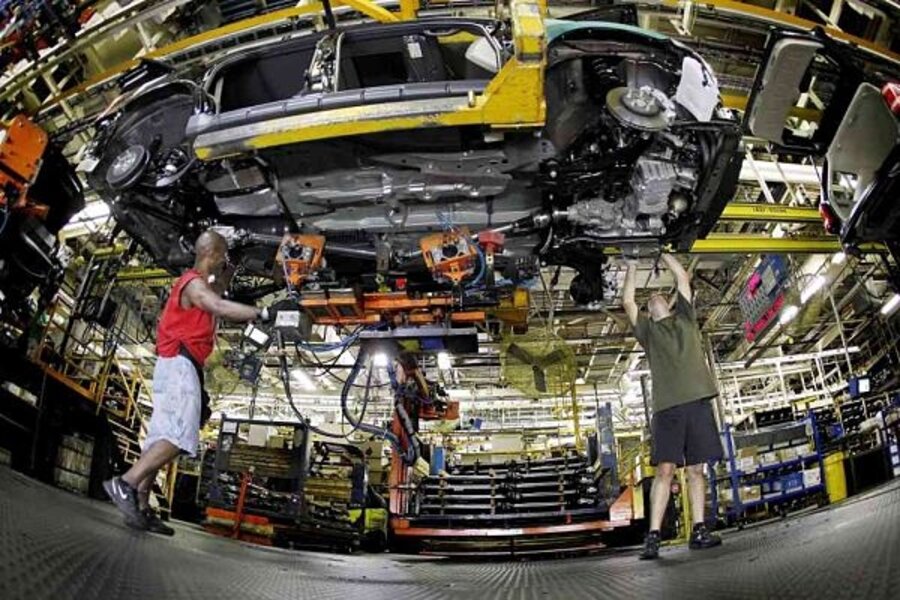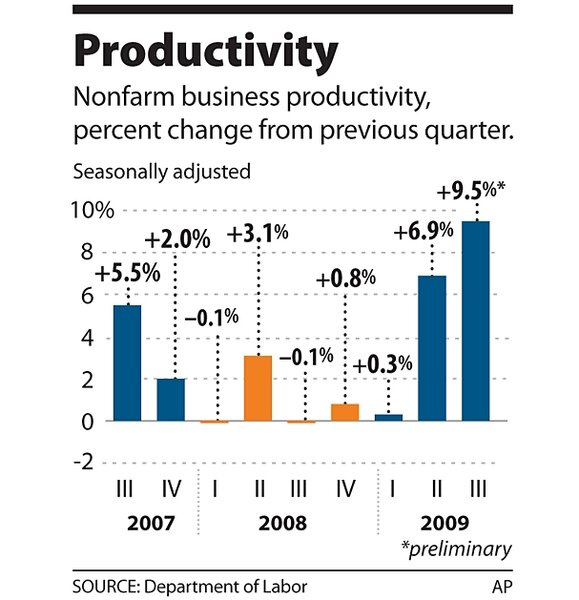US productivity soars, worker pay doesn't
Loading...
The US government's latest reading on the workplace includes a whiff of what may lie ahead for unemployed Americans. And it's not exactly pleasant.
What if your job reappeared, but the work load increased and your raises were so paltry that you never seemed to get ahead?
That's exactly what happened to American workers in the third quarter. Their productivity was on a tear, rising at an annual rate of 9.5 percent in nonfarm businesses from the previous quarter, according to a US Labor Department report released Thursday. It's the biggest seasonally adjusted gain in six years (click on chart at right).
That boost in productivity helped push down unit labor costs – the amount that the boss pays you to produce a unit of output – by 5.2 percent at an annualized rate. Over a year's time, they fell 3.6 percent, the biggest drop in 41 years of federal record-keeping.
But how business achieved these gains is less encouraging for workers. They were more productive last quarter because they created 4 percent more output but worked 5 percent fewer hours compared with the previous quarter.
True, employers paid a little more for the stepped-up work – 0.5 percent higher than a year ago. But that's the smallest annual gain on record, points out Michael Feroli, senior US economist with JPMorgan Chase in New York. Given all the unemployed people still looking for a job, "it's hard to see a very strong acceleration of compensation growth."
All this is great news for employers, because it makes them more competitive with rivals overseas and allows them to grow, creating new jobs. But for workers in the next couple of years, it could well mean more work per hour with not much of an annual raise.
"Forget the rise in the oil price to $80 a barrel, it's a sideshow compared with the collapse in labor costs," writes Paul Ashworth, senior US economist at Capital Economics in Toronto, in an analysis. "These savings will feed through into lower final prices. The upshot is that deflation is still by far the biggest threat" to the economy.
___________
– Don't forget to follow us on Twitter.






